#carl delacroix
Explore tagged Tumblr posts
Text

I visibly grimaced.
hate this guy (Delacroix) I hope they put him in jail soon
#The Violinist (SN)#Carl Delacroix#Seekers Notes#What are tou doing to me with that diamond encrusted violin holy shit
8 notes
·
View notes
Text
Ah. Typical of Lord Delacroix to pretend to faint so he does not have to do community service. Sir, you stabbed a tree.
2 notes
·
View notes
Text
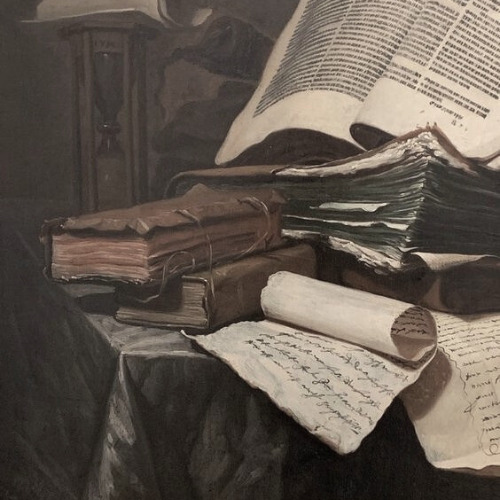





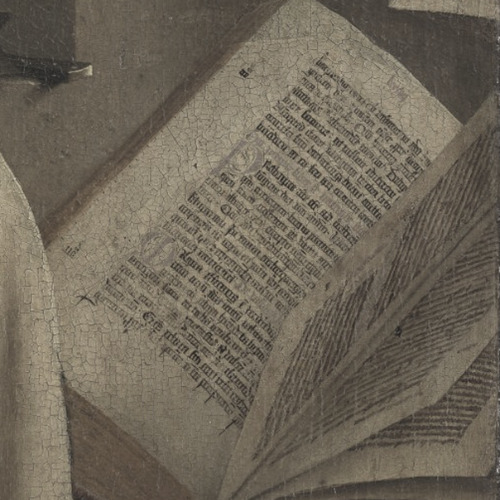

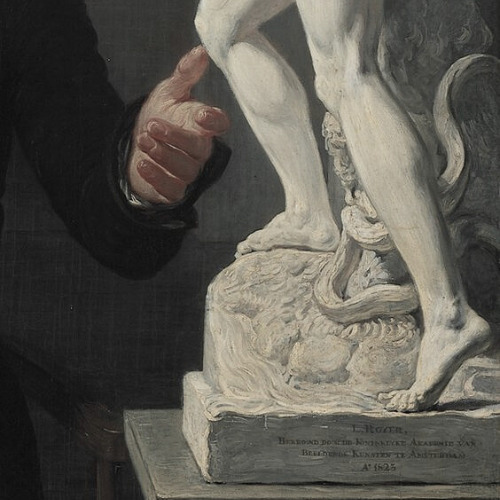
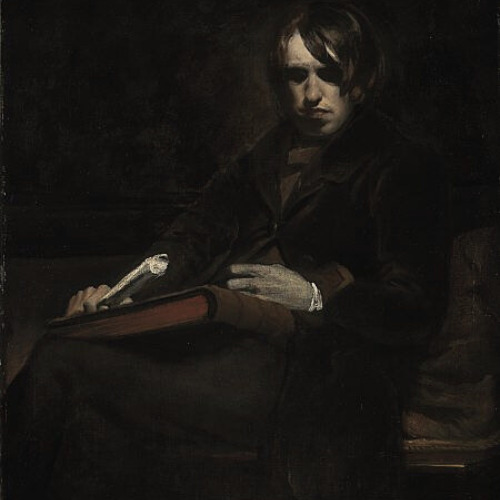


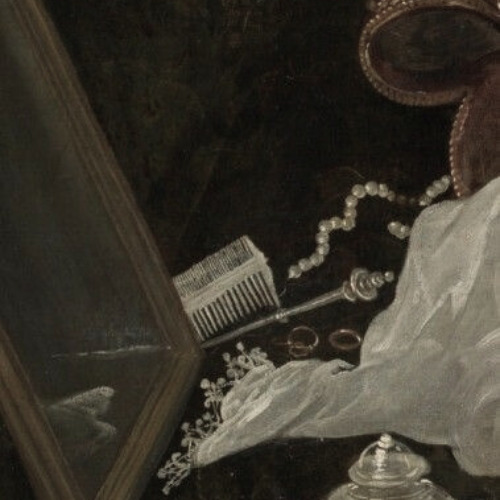


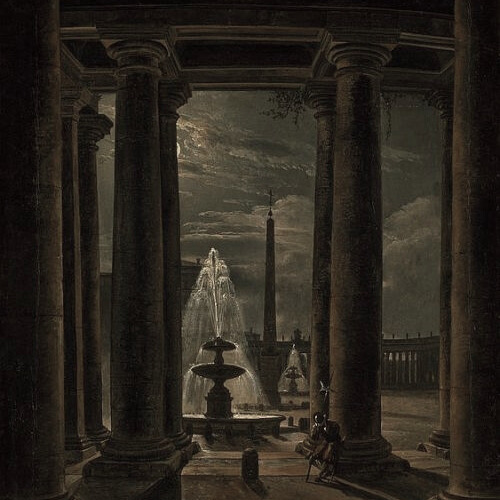

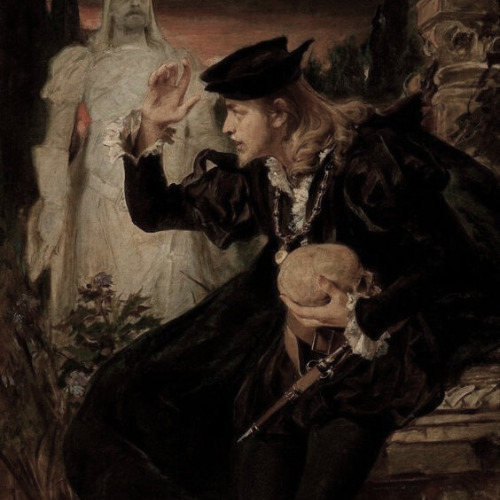
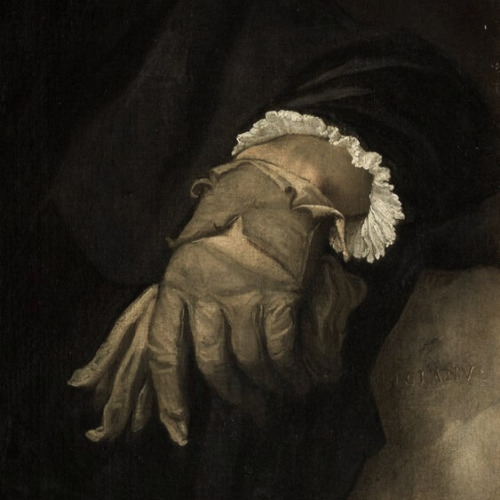

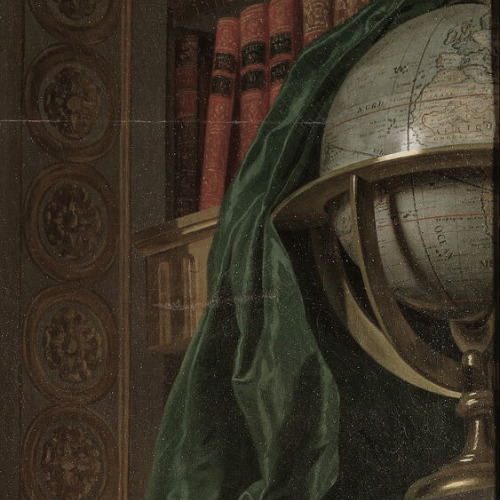



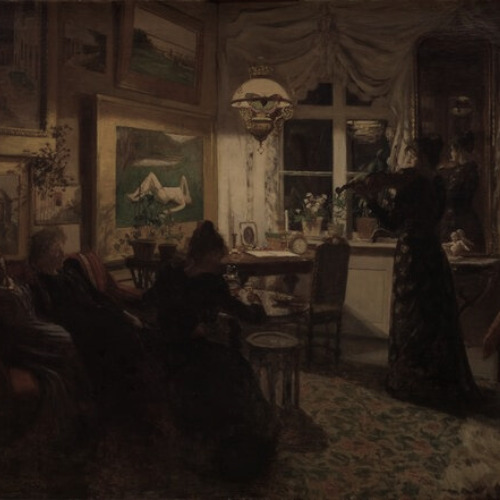



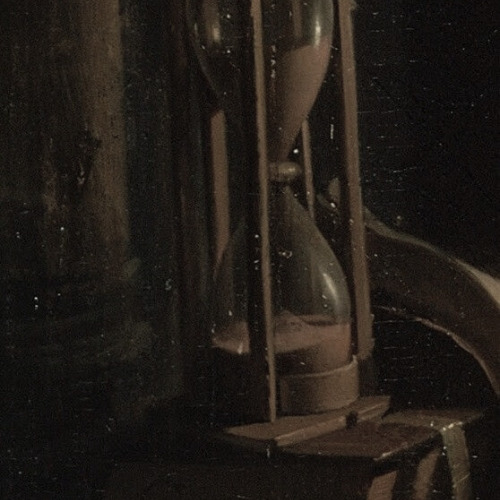

art aesthetics: dark acadmia
#cant find artist#artist is gerrit dou#artist is paul fischer#artist is james carroll beckwith#artist is sir anthony van dyck#artist is nicolas regnier#artist is hubert and jan van eyck#artist is eugene delacroix#artist is jan willem pieneman#artist is sir william fettes douglas#artist is wilhelm bendz#artist is carl holsoe#artist is jacopo tintoretto#artist is thomas wyck#artist is lindsay bernard hall#artist is franz ludwig catel#artist is pieter claesz#artist is pedro americo#artist is titian#artist is giorgio vasari#artist is alexander roslin#artist is jusepe de ribera#artist is anne francoise couloumy#-artist is carl holsoe#artist is anna petersen#artist is peter hasenclever#artist is irving ramsey wiles#artist is georges de la tour#artist is unknown-#art aesthetics
424 notes
·
View notes
Text
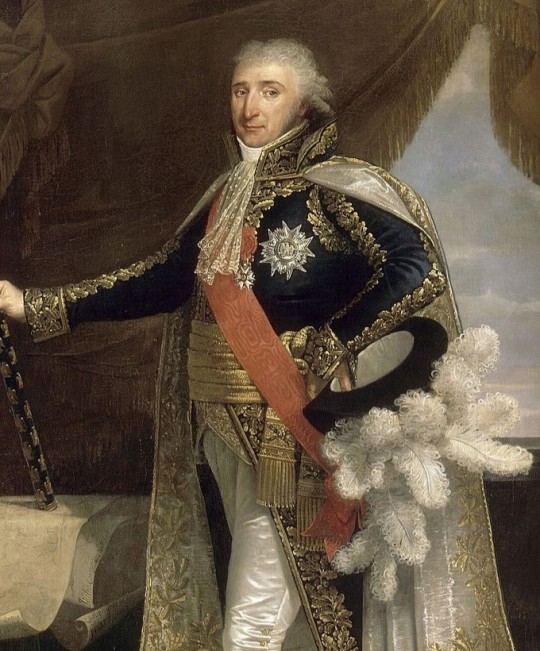

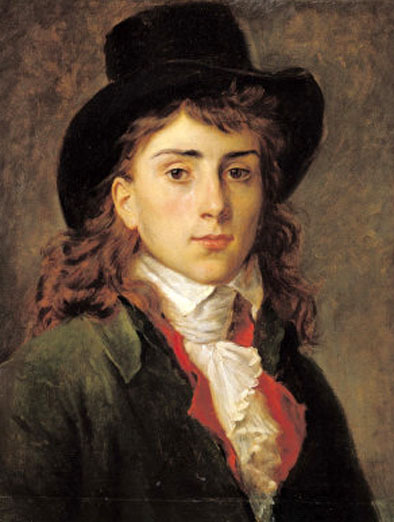
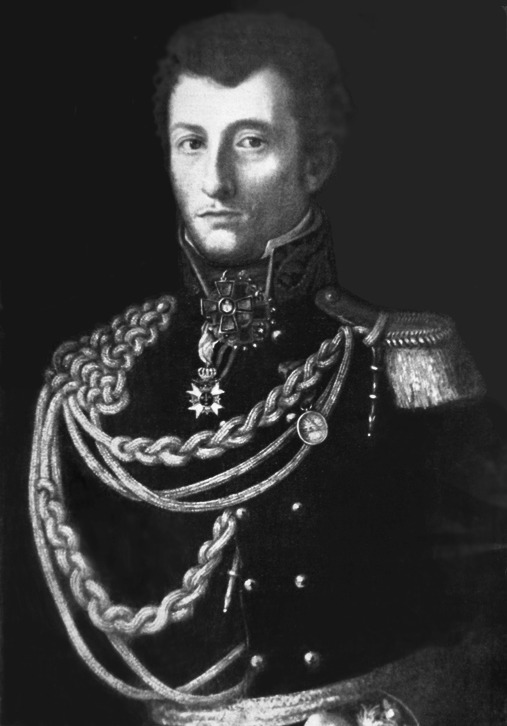

*aka "who are you most shocked/surprised/upset/aghast that we lost in the first round?"
Propaganda for Each:
Augereau:
“dude’s backstory is a fucking dungeons and dragons adventurer backstory, duellist who had to flee France after killing an officer, adventurered in Prussia and Russia and duelled and fought, also cannot physically stop swearing, what a man”
“Man of many talents even before the Revolution: noted swordsman and duellist, so talented that he accidentally killed a superior officer. Joined armies all over Europe, then taught fencing and dancing after he settled. Eloped with his first wife, whom he loved and respected. Partly responsible for victories at Castiglione and Arcole during the Italian campaign. Tied himself to a horse to lead his corps on Eylau (very metal). Has a very cool portrait where he points at a portrait of himself at Arcole
Gogol:
[no propaganda submitted]
Gros:
One of Napoleon’s main painters. Pioneer of French Romanticism. Inspired many artists such as Delacroix and Géricault. He was very pretty.”
Clausewitz:
"what could possibly be sexier than a prussian uniform and a lasting impact on military theory?”
Czartoryski:
"Decided that the way to free Poland was by having a threesome with Alexander and his wife.”
#napoleonic sexyman tournament#naps ironically lost by more than a percent#although coming back to win a redemption poll was so on brand for him that I almost tweaked the rules for it
48 notes
·
View notes
Text
Natale (Xmas)

Christmas Eve in the Studio, 1911 ca. | Mary Fairchild Low (1858-1946, USA)
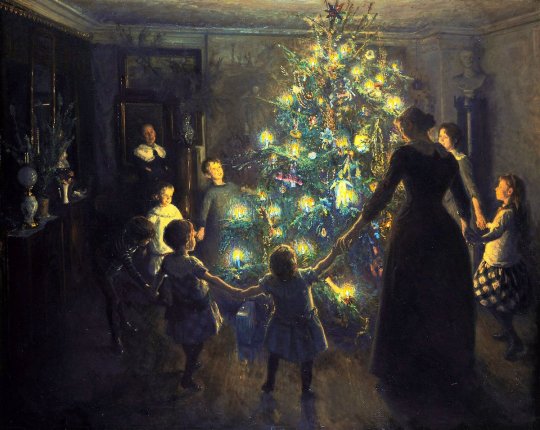
Happy Christmas, 1891 | Viggo Johansen (1851-1935, Denmark)

Christmas in Madison Square Park | Paul Cornoyer (1864-1923, USA)
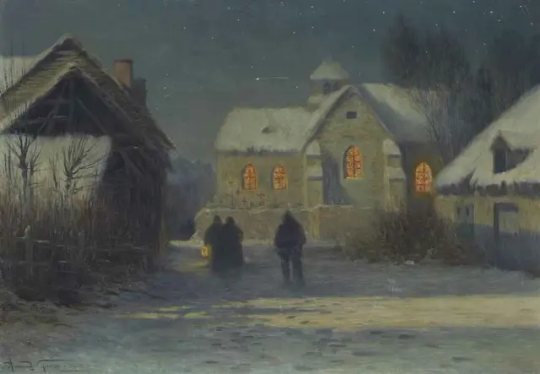
Christmas night in Bertincourt, Champagne, 1900 | Armand Guéry (1853-1912, France)
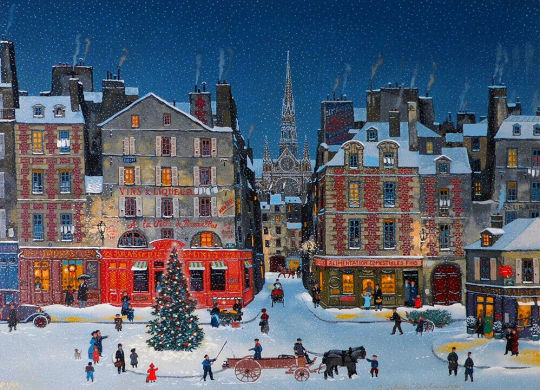
Noël, Paris | Michel Delacroix (1933, France)

The little Christmas trees, 1950's | Margaret Thomas (1916-2016, England)
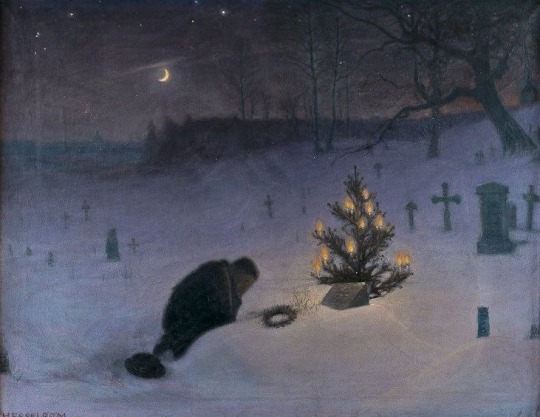
Christmas eve at the grave, 1896 | Otto Hesselbom (1848-1913, Sweden)
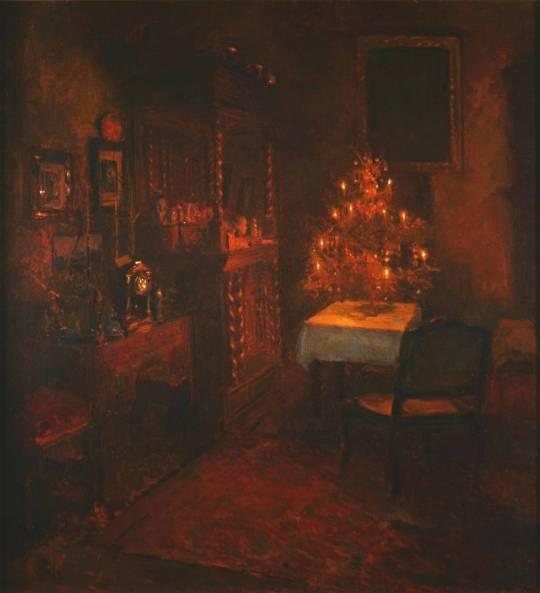
Christmas eve, 1884 | Carl von Marr (1858-1936, Germany)
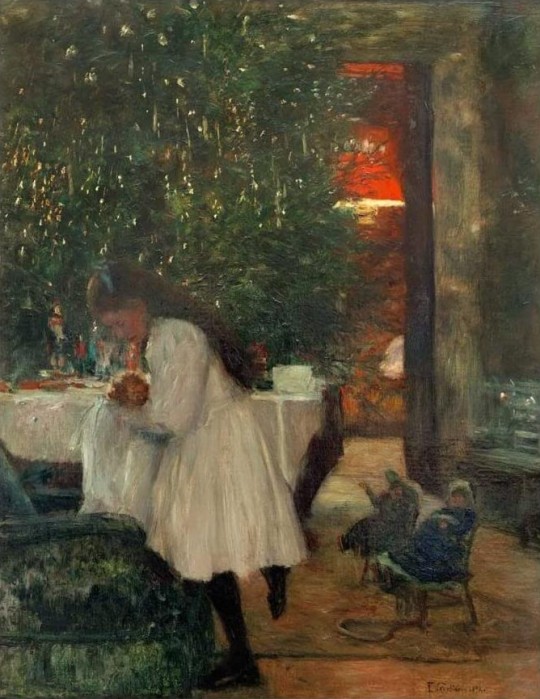
Under the Christmas Tree, 1892 | Franz Skarbina (1849-1910, Germany)
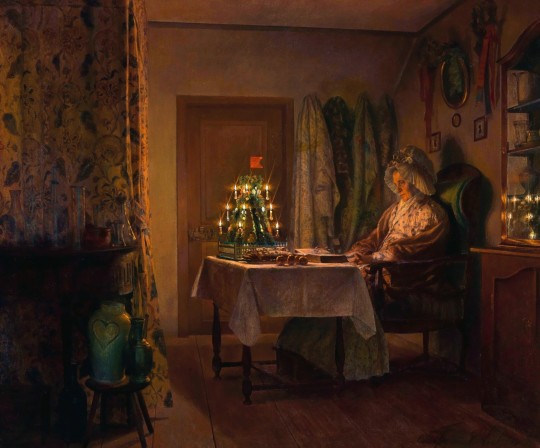
Lonely Christmas | Oskar Freiwirth-Lützow (1862-1925, Germany)
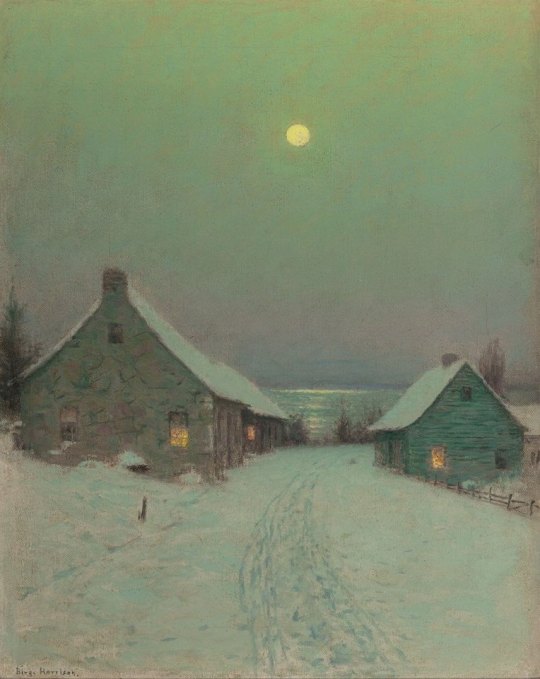
Christmas Eve (La vigilia di Natale), early 1900s | Lovell Birge Harrison (1854-1929, USA)
6 notes
·
View notes
Text
What If your favorite historical figure is in Ikemen Vampire Universe
My Favorite Is:
Raden Saleh Syarif Boestaman

Potrait painting Saleh Syarif Boestaman by Carl Johann Baehr
Raden Saleh Syarif Bustaman
(1811 – 23 April 1880) was born in the village of Terboyo, near Semarang on the island of Java in the Dutch East Indies (present-day Indonesia).
He was born into a noble Hadhrami family; his father was Sayyid Husen bin Alwi bin Awal bin Yahya. He was the grandson of Sayyid Abdullah Bustam through his mother, Raden Ayu Sarif Husen bin Alwi bin Awal. Through his sister, Roqayah, Raden Saleh was uncle by marriage to the famous religious leader Habib Ali Kwitang.
He was considered to be the first "modern" artist from Indonesia (then the Dutch East Indies), and his paintings corresponded with nineteenth-century romanticism which was popular in Europe at the time. He also expressed his cultural roots and inventiveness in his work.
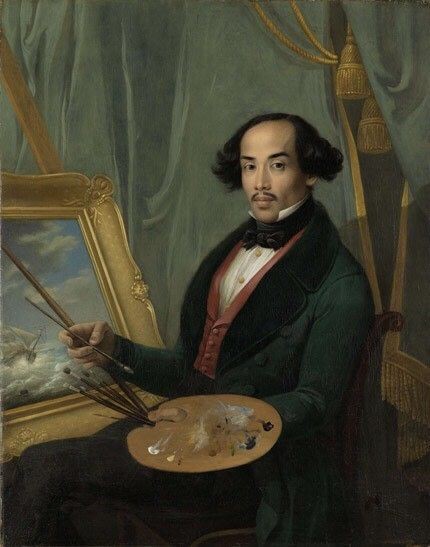
Potrait painting of Raden Saleh by Friedrich Carl Albert Schreuel in 1840.
Young Raden Saleh was first taught in Bogor by the Belgian artist A.J. Payen. Payen acknowledged the youth's talent, and persuaded the colonial government of the Netherlands to send Raden Saleh to the Netherlands to study art. He arrived in Europe in 1829 and began to study under Cornelius Kruseman and Andreas Schelfhout.
It was from Kruseman that Raden Saleh studied his skills in portraiture, and later was accepted at various European courts where he was assigned to do portraits. While in Europe, in 1836 Saleh became the first indigenous Indonesian to be initiated into Freemasonry. From 1839, he spent five years at the court of Ernest I, Duke of Saxe-Coburg and Gotha, who became an important patron.
From Schelfhout, Raden Saleh furthered his skills as a landscape painter. Raden Saleh visited several European cities, as well as Algiers. In The Hague, a lion tamer allowed Raden Saleh to study his lion, and from that his most famous painting of animal fights was created, which subsequently brought fame to the artist. Many of his paintings were exhibited at the Rijksmuseum in Amsterdam. Several of his paintings were destroyed when the Colonial Dutch pavilion in Paris was burnt in 1931.
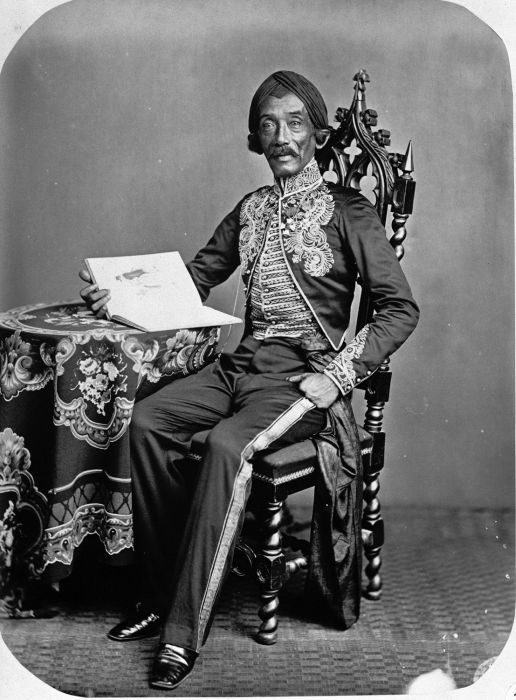
Studio Potrait in 1872
23 April 1880, Saleh suddenly fell sick. He claimed that he was poisoned by one of his servants, and subsequently died; however post-mortem examination showed that his circulatory system was disrupted due to a clot near his heart. Saleh was buried two days later in Kampung Empang, Bogor. As reported in Javanese Bode newspaper, 28 April 1880, his funeral was "attended by various landheeren [landlords] and Dutch officials, and even by curious students from nearby school.
Raden Saleh Painting
During his stay in Paris, Saleh met Horace Vernet whose painting frequently took themes of African wildlife. Compared to Vernet, Saleh's painting seems to be more influenced by the romantic painter Eugène Delacroix. This could be seen in one of Saleh's work, Hunting Lion, 1840, which has similar composition to Delacroix's Liberty Leading the People. However, Werner Kraus, a researcher in the Southeast-Asian Art Center of Passau, Germany, said that Saleh "never mentioned Delacroix. Perhaps he saw Delacroix's, and possibly Vernet's, works during an exhibition.
And one of my favorite painting by Raden Saleh is:
The Arrest of Pangeran Diponegoro
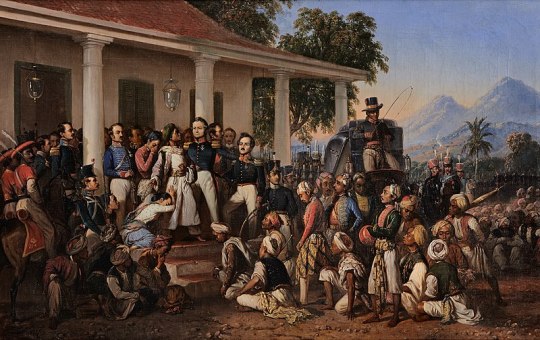
Raden Saleh is particularly remembered for his historical painting, The Arrest of Pangeran Diponegoro, which depicted the betrayal of the rebel leader Prince Diponegoro by the colonial government, thus ending the Java War in 1830. The Prince was tricked into entering Dutch custody near Magelang, believing he was there for negotiations of a possible cease-fire. He was captured through treachery and later deported.
The event had been previously painted by a Dutch painter Nicolaas Pieneman, commissioned by Lieutenant General Hendrik Merkus de Kock. It is thought that Saleh saw this painting during his stay in Europe. Saleh made significant changes in his version of the painting; Pieneman painted the scene from the right, Saleh from the left.
Pieneman depicts Diponegoro with resigned expression, while in Saleh's he appears to be outraged. Pieneman gave his painting the title Submission of Prince Diponegoro, while Saleh gave The Arrest of Pangeran Diponegoro. It is known that Saleh deliberately painted Diponegoro's Dutch captors with large heads to make them appear monstrous, as opposed to the more proportionally depicted Javanese.

De onderwerping van Diepo Negoro aan luitenant-generaal baron De Kock by Nicolaas Pieneman 1830–1835.
Raden Saleh’s work has been regarded as a sign of incipient nationalism in what was then the Dutch East Indies / Indonesia. This can also be seen it the depiction of Diponegoro's men. Pieneman had never been to the Indies, and so depicted Diponegoro's men in a more Arabic fashion. Saleh's version has a more accurate depiction of native Javanese clothing, with some figures wearing batik and blangkon.
Saleh finished this painting in 1857 and presented it to Willem III of Netherlands in The Hague. It was returned to Indonesia in 1978 as a realization of a cultural agreement between the two countries in 1969, regarding the return of cultural items which were taken, lent, or exchanged to the Dutch in the previous eras. Even though the painting did not fall under any of those categories, because Saleh presented it to the King of the Netherlands and it was never in the possession of Indonesia, it was nevertheless returned as a gift from the Royal Palace of Amsterdam, and is currently displayed at the Merdeka Palace Museum in Jakarta.
My sketch prototype
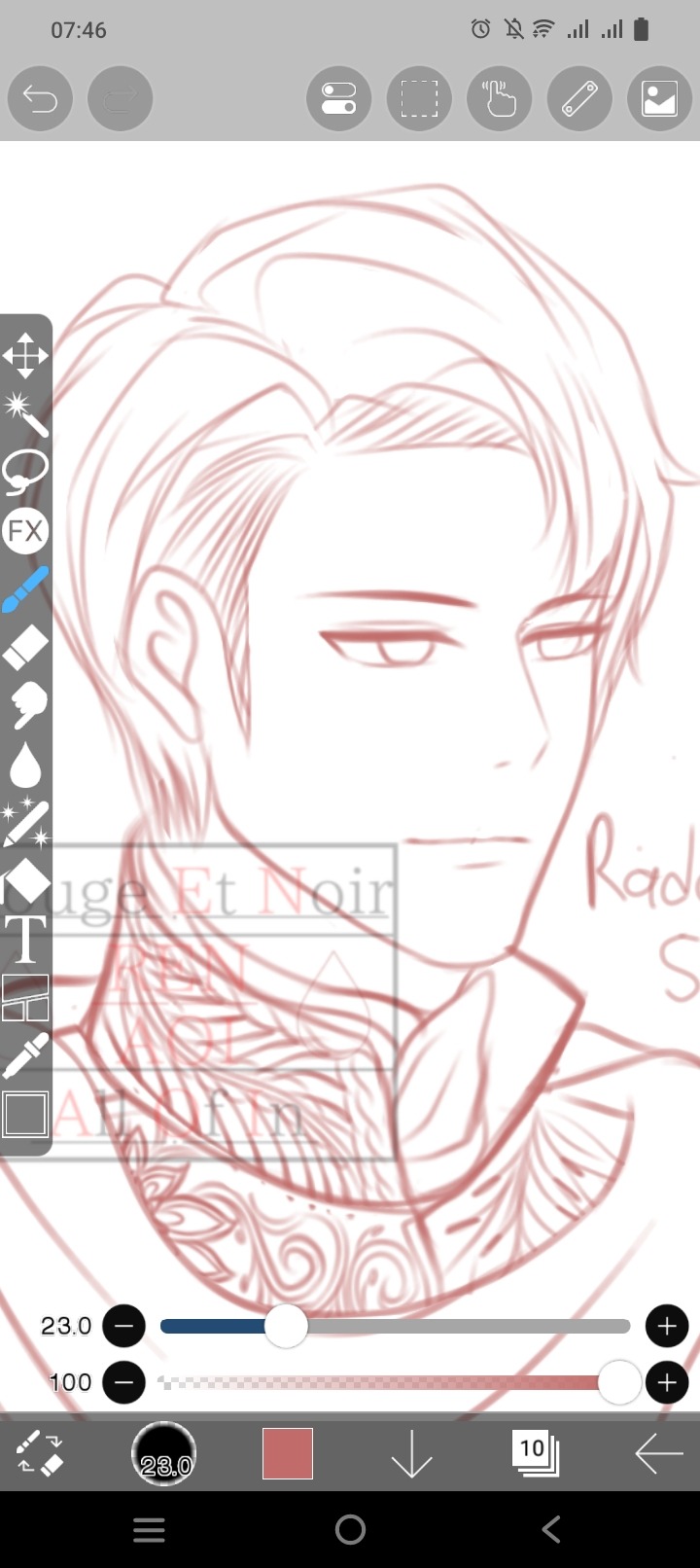
I'm still trying to improve my digital art skill. And i think i will try to write story au about him in Ikevamp universe. I'm sorry for my bad English 😭😭
3 notes
·
View notes
Text


Plaque en hommage à : August Strindberg
Type : Commémoration
Adresse : Place August Strindberg, 75006 Paris, France
Date de pose : 6 novembre 2017 [source]
Texte : "J'entre souvent dans l'église pour me fortifier à la contemplation de la lutte de Jacob avec l'Ange d'Eugène Delacroix. Et en sortant je garde le souvenir du lutteur qui se tient debout en dépit de sa hanche démise." August Strindberg, 1849-1912, sculpté en 1905 par l'artiste suédois Carl Eldh (1873-1954). Ecrivain et artiste suédois, August Strindberg a vécu de longues et nombreuses périodes dans le 6ème arrondissement. Il considérait ses séjours à Paris comme "l'époque la plus fructueuse de sa vie".
Quelques précisions : August Strindberg (1849-1912) est un écrivain et peintre suédois. Après une jeunesse mouvementée durant laquelle il renonce à devenir médecin, il se tourne vers l'art et la littérature, accédant à la notoriété avec son roman La Chambre rouge, publié en 1879, célébrité qui se confirme quelques années plus tard avec sa pièce de théâtre Mademoiselle Julie (1888). Il s'installe à Paris en 1894 et, désormais versé dans le mysticisme et l'occultisme (après avoir également versé dans le nihilisme), s'intéresse à l'alchimie et à l'astronomie. Il relate ses années parisiennes, qui l'ont profondément marqué, dans Inferno, paru en 1897 après son retour en Suède. Il décède des suites d'un cancer. Cette plaque commémorative est située en dessous d'un buste à son effigie. Une autre plaque commémorative se trouve juste à côté sur le mur extérieur de l'église Saint-Sulpice, tandis qu'une autre plaque commémorative peut être trouvée non loin, rue d'Assas, où il vécut.
#individuel#hommes#commemoration#ecrivains#artistes#peintres#france#ile de france#paris#august strindberg#datee
0 notes
Text
Les grands peintres : le mouvement romantique - Théodore Géricault (1791-1824)
Théodore Géricault(1791-1824) Théodore Géricault est un peintre emblématique, avec Delacroix du mouvement romantique. Nait en 1791 à Rouen Théodore Géricault a grandi dans une famille aisée et a montré très tôt un intérêt pour l’art et les chevaux. Il fait ses études à l’École des beaux-arts de Paris sous la houlette de maitres comme Carle Vernet et Pierre-Narcisse Guérin. Officier de…
0 notes
Text
listing my favorite things bc im bored
Movies:
Lilya 4-Ever
Christiane F
Level 16
The Chalk Lines
The Tourist
American Mary
The Man Who Cried
The Rum Diary
The DaVinci Code
All of Pirates of The Caribbean
All of Fantastic Beasts
Alice in Wonderland
Orphan
Twister
Room
But I'm A Cheerleader
Interstellar
2001: A Space Odyssey
Blade Runner 2049
Kids
Buffalo 66
The V*rgin S*icides
Eyes Wide Shut
Requiem For A Dream
Prozac Nation
Thirteen
Marie Antoinette
Priscilla
Midsommar
The Florida Project
Trainspotting
Bones and All
Enter the Void
White Oleander
Soylent Green
TV Shows
South Park
Hannibal
SVU
Alba
Criminal Minds
(Old) Grey's Anatomy
(Old) Station 19
The Idol
Inventing Anna
(Old) New Amsterdam
Everything Sucks
Midnight Mass
The X-Files
Books
Aeneid- Virgil
Dante's Divine Comedy- Dante Alighieri
The Brothers Karamazov- Dostoyevsky
Industrial Society And Its Future- Ted K
Anti-Tech Revolution- Ted K
Technological Slavery- Ted K
The Golden Ratio- Gary Meisner
Imperialism THSOC- Vladimir L
The Ego and Its Own- Max Stirner
The Art Of War- Sun Tzu
The Iliad and The Odyssey- Homer
Speak- Laurie Halse Anderson
Wintergirls- Laurie Halse Anderson
Pride and Prejudice- Jane Austen
Brave New World- Aldous Huxley
1984- George Orwell
Crime and Punishment- Dostoyevsky
L*lita- Vladimir Nabokov
The Bell Jar- Sylvia Plath
The Egyptian Book of the Dead
Decoding the Universe- Charles Seife
Art
Our Lady of Kazan- Unknown
A Limier Briquet Hound- Rosa Bonheur
Cats- Armando Spadini
Thunder Storm on Narragansett Bay- Martin Heade
The Martyrdom of Saint Thecla- Pietro Valsecchi
The Abduction of Europa- Rembrandt
The Albobrandini Madonna- Titian
The Sistine Madonna- Raphael
A Young Girl and Her Dog- Joshua Reynolds
Girl at a Window- Rembrandt
Rio Palo Battle- Jose Espinosa
Valley of the Yosemite- Albert Bierstadt
The First Thorns of Knowledge- Unknown
Inside of a Church- Carl Graeb
Highland Raid- Rosa Bonheur
After the Rain- Rae Bredin
Girl Getting Out of the Bath- Paolo Vetri
Shipwreck 1783- Claude-Joseph Vernet
The Birth of Venus- Nicolas Poussin
Virgin Mary of the Cathusians- Manuel Bayeu
Puerto Mediterraneo- Claude-Joseph Vernet
The Consecration of Saint Nicholas- Paolo Veronese
First Mass In Brazil- Vitor Meireles
The Death of Sardanapalus- Eugene Delacroix
Europa- Titan
Divine Shepherdess- Manuel de Samaniego
Saul and David- Rembrandt
Respect- Paolo Veronese
Moses with the Ten Commandments- Rembrandt
Westminster Abbey- Max Ainmiller
Song of the Waters- Jerome Thompson
guys i have over 2k pics saved on google arts and culture I gotta stop
1 note
·
View note
Text
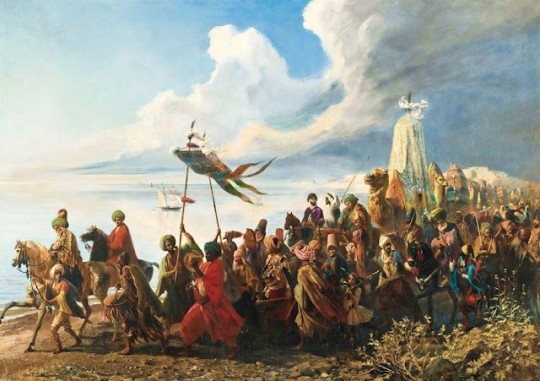
22 Works by Orientalist Artists, Eugène Delacroix, Antoine-Jean Gros, Benjamin-Constant, Emile Lecomte-Vernet, Charles Wilda, Leopold Carl Müller, Jean-Léon Gérôme, John Frederick Lewis…, with footnotes
Please follow link for full post
Please follow link for full post
Orientalis,Benwell,CARL WERNER,Delacroix,Müller,Wilda,OTTO PILNY,ALPHONS LEOPOLD MIELICH,Gros,ALFRED DEHODENCQ,EDWIN LORD WEEKS,Vernet-Lecomte,GEORGES WASHINGTON, footnotes, Zaidan, footnotes,
Orientalist #footnotes #Zaidan #Mythology #Religion #biography #Paintings #Art #History #Artists #paintings #fineart #footnotes
#Orientalist#footnotes#Zaidan#Mythology#Religion#biography#Paintings#Art#History#Artists#paintings#fineart
0 notes
Text

him being witty is one of my favourite things about him (but honestly everything about him is my favourite so…)


WHAT HAS THIS GUY GOTTEN HIMSELF INTO AGAIN. (HEAD IN MY HANDS) STOP MAKING ME SO WORRIED ABOUT YOU
#also that time when he went ‘yes i’m talking about our beloved lord’ about carl delacroix (and he said it when he was suspicious of him)#the informant#seekers notes
6 notes
·
View notes
Text
I wish Carl Delacroix was real... so I could kick his ass.
0 notes
Text
Romantizm | Sanat Akımları

Romantizm (veya Romantisizm) Batı Avrupa'da 18. yüzyılın ikinci yarısında Sanayi Devrimi'ne tepki olarak ortaya çıkmış karmaşık bir sanatsal, yazınsal ve entellektüel harekettir. Kısmen Aydınlanma Çağı'nın aristokratik toplumsal ve siyasal normlarına karşı bir başkaldırı ve doğanın bilimsel rasyonelleştirilmesine karşı bir tepkiydi. Ve kendini en çok görsel sanatlarda, müzikte ve edebiyatta gösterdi.
Romantizm akımı güçlü duyguyu estetik yaşantının otantik kaynağı olarak öne çıkardı. Ürküntü, dehşet, korku ve huşu —ve özellikle de el değmemiş doğanın yüceliği ve onun pitoresk nitelikleriyle karşılaşıldığında duyulan huşu— gibi duygulara yeni bir vurgu yaptı.
Romantizm yeniden canlandırılmış bir ortaçağcılığı veya otantik olarak ortaçağa ait olarak algılanan sanat ve anlatı unsurlarını yüceltmek üzere rasyonel ve Klasisist ideal modellerin ötesine geçti. Romantizm bir yandan nüfus artışı, şehirlerin büyümesi ve sanayileşmeden kaçarken, bir yandan da egzotik, bilinmedik ve uzak olanı kucakladı.
Romantik bir karakter üstün yetenekli, yanlış anlaşılmış yalnız bir kişidir; yaşadığı toplumun törelerinden ziyade kendi esinlerinin buyrultularını izleyen yaratıcı bir kişidir.
Her ne kadar hareketin kökleri, sezgi ve duyguyu Aydınlanma rasyonalizmine yeğleyen Alman Sturm und Drang hareketine uzansa da, Fransız Devrimi'nin ideolojileri ve bu devrim sürecinde yaşanan hadiseler hem Romantizmin hem de Karşı-Aydınlanma'nın ortaya çıktığı arkaplanı oluşturmuştur. Sanayi Devrimi'nin sınırlarının da kısmen modern gerçeklerden kaçış olan Romantizm üzerinde etkisi oldu. Romantizm topluma öncülük edecek olan cesur bireyciler ve sanatçıların başarılarını yüceltti. Eleştirel otorite olarak bireysel imgelemi meşrulaştırdı ve bu da sanattaki klasik form anlayışlarından kurtulmayı sağladı.
Fransız okulunun yeni kuşağının öncülüğündeki Avrupa resminde Romantik duyarlılık akademilerde öğretilmekte olan neoklasisizm ile karşıtlık içerisindeydi.
Romantik akımla yakından ilişkilendirilebilecek sanatçılar arasında J.M.W. Turner, Caspar David Friedrich, John Constable ve William Blake sayılabilir. Birleşik Devletler'de ise önde gelen Romantik akım, dramatik manzara resimleriyle kendini gösteren Hudson Nehri Okuluydu.
Romantizm akımının ardılları hiç kuşkusuz Ön-Rafaelciler ve Sembolistlerdir. Ama Empresyonizm ve onun yoluyla neredeyse bütün 20. yüzyıl sanatı Romantik gelenekle köklü bir bağa sahiptir.

Theodore Gericault, Medusa'nın Salı, 1819

Eugène Delacroix, Özgürlük Halka Önderlik Ediyor, 1830

Carl Blechen, Amalfi'de Boğaz, 1831

Carl Blechen, Galgenberg, 1833

Caspar David Friedrich, Savrulan Bulutlar, 1820

Caspar David Friedrich, Buz Denizi, 1823

Caspar David Friedrich, Sis Denizi Üzerindeki Gezgin, 1818

Caspar David Friedrich, Deniz Kıyısındaki Keşiş, 1809

Thomas Girtin, Lindisfarne Kalesi, Kutsal Ada, 1797

William Turner, Kar Fırtınası, 1842
#Romantizm#art#artist#Romantisizm#j.m.w. turner#Caspar David Friedrich#John Constable#William Blake#Sturm und Drang#Carl Blechen#Eugène Delacroix#Theodore Gericault#Thomas Girtin#vertical#William Turner#sanat#sanat akımları#ressamlar#ressam#resim#picture
5 notes
·
View notes
Photo
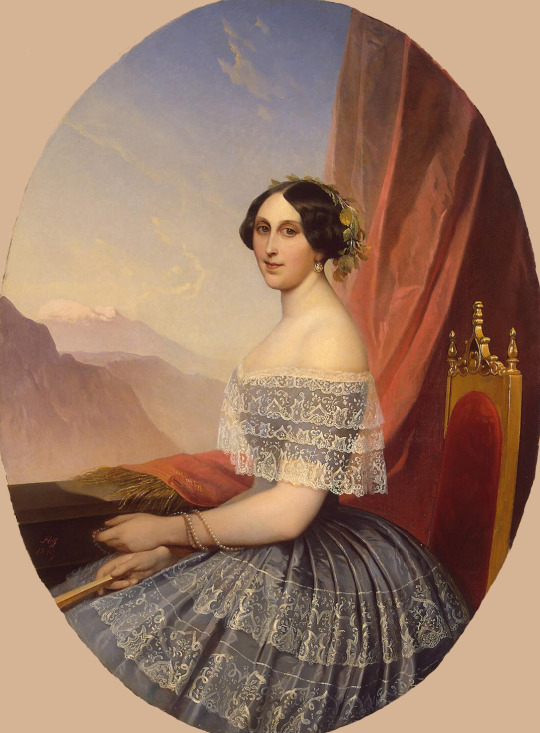



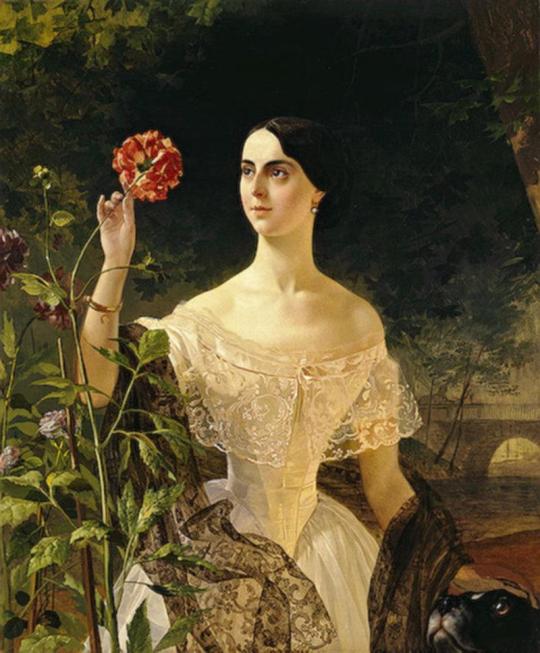
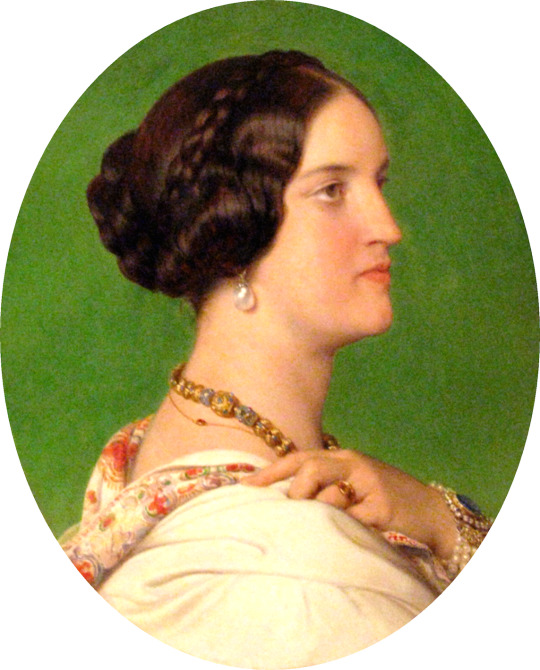


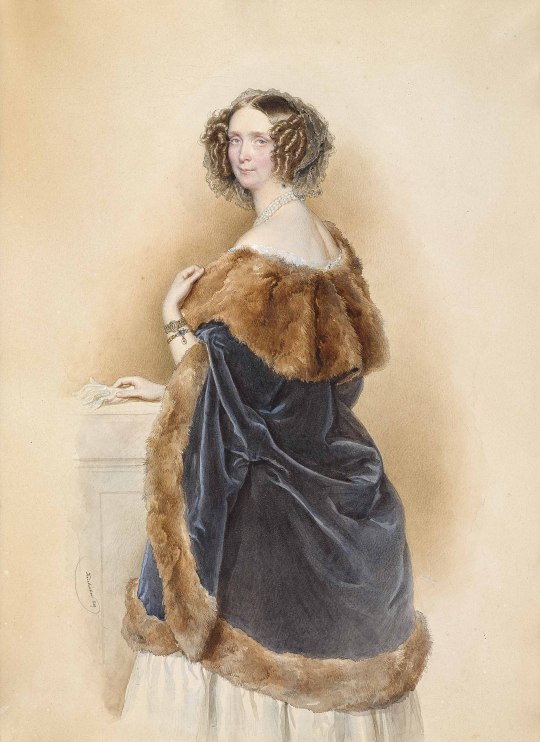

Closing the 1840s -
Top: 1849 Grand Duchess Maria Mikhailovna (?) by Carl Timoleon von Neff (Hermitage) 1085X1473 @72 492kj. The Hermitage lists this as "Portrait of a Young Woman." However Dru identified the sitter as Grand Princess Maria Mikhailovna in a posting to the Alexander Palace Time Machine Discussion Forum of 27 September 2011 and another poster agreed with some doubt.
This work appeared to be unfinished, the background was not over-painted in an oval all around, although a guideline was made and much of the oval was completed. I filled in the unfinished background with Photoshop.
Second row left: 1849 Elizabeth A. Poletika (1832-1854), daughter of Idalia Poletika, in marriage Mordvinova by Vladimir Ivanovich Hau (location ?). From Wikimedia 1536X1973 @200 434kj.
Second row right: 1849 Madame Leon Reisener by Henri-François Riesener (Musée national Eugène-Delacroix - Paris, France). From pinterest.com/CardRichelieu/portrait/ 775X1200 @72 254kj.
Third row: 1849 Comtesse Charles d'Agoult, née Marie de Flavigny, and Her Daughter Claire d'Agoult by Jean Auguste Dominique Ingres (Morgan Library & Museum - New York City, New York, USA). Old image from unrecorded source 2214X2677 @300 2.4Mj.
Fourth row left: 1849 Countess Sofia Andreievna Bobrinskaia, née Shuvalov by Karl Brullov (Hermitage). From liveinternet.ru/users/4000579/post386885193 800X968 @72 224kj.
Fourth row right: 1849 Delfina Potocka by Paul Delaroche (location unknown to gogm) photo - Maciej Szczepańczyk (Mathiasrex). From Wikimedia 1143X1418 @72 2.9Mp.
Fifth row: 1849 Harriet Sutherland-Leveson-Gower, Duchess of Sutherland by Franz Xaver Winterhalter (Dunrobin Castle, Sutherland, UK)> From Wikimedia; removed spots & flaws & fixed edges w Pshop 1086X1700 @300 409kj. She was a Lady-in-Waiting to and close friend of Queen Victoria. Dunrobin Castle is the family seat of the Sutherland family,
Sixth row left: 1849 Dowager Queen Adelaide by Richard James Lane after Franz Xaver Winterhalter (British Mueum). From their Web site 1737X2500 @300 1.8Mj.
Sixth row right: 1849 Erzherzogin Sophie von Österreich, Prinzessin von Bayern by Josef Kreihuber (auctioned by Neumesiter). From their Web site 2407X3307 @300 2.1Mj.
Bottom: 1849 Comtesse de Bellefonds by Jean-Hégésippe Vettier (Musée des Beaux-Arts de Bordeaux - Bordeaux, Aquitaine, France). From collections-musees.bordeaux.fr/ow4/mba/images/006-074-1559; fixed spots. bottom edge, & cracks w Pshop 820X1024 @72 246k.
#1849 fashion#Romantic era fashion#Maria Mikhailovna#Carl Timoleon von Neff#early Victorian fashion#straight coiffure#off shoulder neckline#lace bertha#floral headdress#Elizabeth A. Poletika#Vladimir Ivanovich Hau#V waistline#full skirt#Madame Leon Reisener#Henri-François Riesener#jacket#long sleeves#Marie de Flavigny#Claire d'Agoult#Jean Auguste Dominique Ingres#high neckline#collar#Countess Sofia Andreievna Bobrinskaia#Karl Bryullov#Delfina Potocka#Paul Delaroche#Harriet Sutherland-Leveson-Gower#Duchess of Sutherland#Franz Xaver Winterhalter#wrap
15 notes
·
View notes
Note
hello! what are some of your favourite painters?
So very many! A non-exhaustive list of the masters of crunchy colour and detail*:
georges barbier, jean beraud, franklin booth, hieronymus bosch, william-adolphe bouguereau, alexandre cabanel, canaletto, caravaggio, vittore carpaccio, thomas cole, salvador dalí, eugène delacroix, paul delaroche, otto dix, gustave doré, edmund dulac, erté, william etty, henri fantin-latour, roberto ferri, frans francken the younger, caspar david friedrich, artemisia gentileschi, charles dana gibson, vincent van gogh, natalia goncharova, john atkinson grimshaw, francesco guardi, remi van haanen, carl georg hasenpflug, edward hopper, pieter huys, angelica kauffmann, émile levy, philipjames de loutherbourg, michele marieschi, john martin, norval morrisseau, kay nielsen, ernst ferdinand oehme, arthur rackham, bill reid, david roberts, nicola samori, john singer sargent, egon schiele, gennady spirin, james tissot, henri toulouse-lautrec, suzanne valadon, da vinci, andrew wyeth....
*also including illustrators in this list
97 notes
·
View notes
Text
My headcanon is that Sam didn't actually grow up in Delacroix, he moved there in his teen years. So, he actually grew up in Harlem with Carl Lucas (Luke Cage) and his brother, Willis Stryker. He got his hair cut at Pop's every few weeks, and even was in the gang with Diamondback and Cottonmouth for a while. That's what scared his parents enough to move to Delacroix, which made them lose touch. When he heard that Pop was dead, he came to the funeral to pay his respects.
2 notes
·
View notes